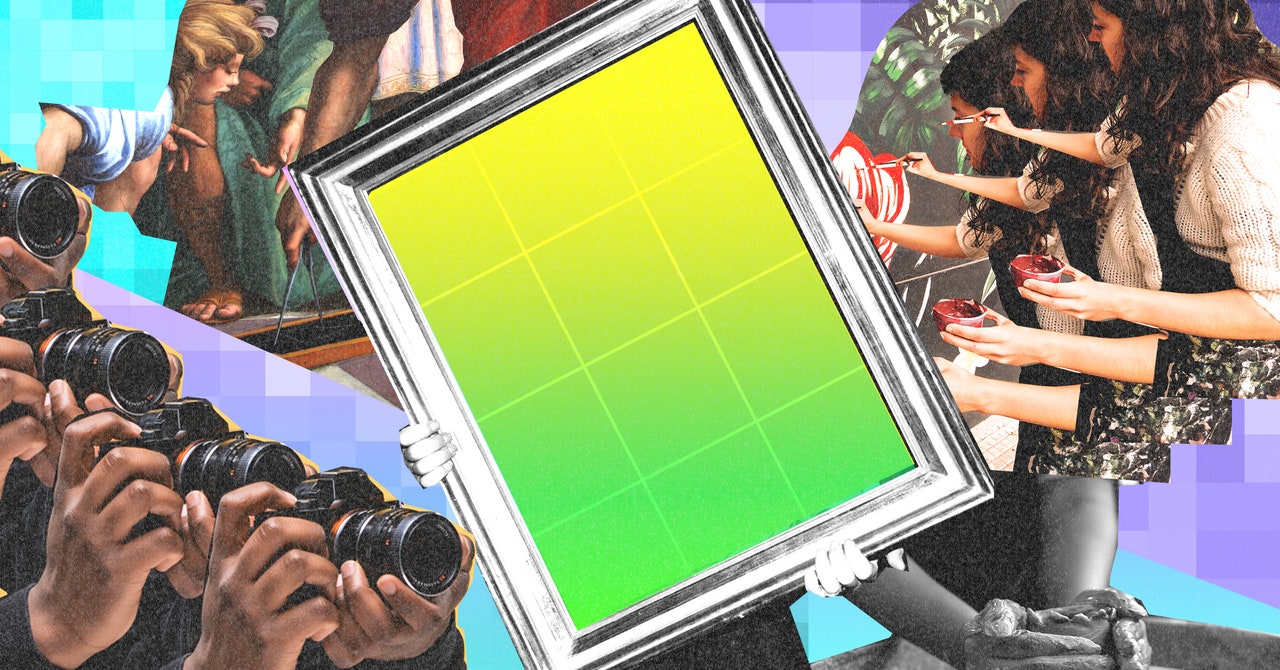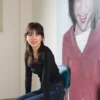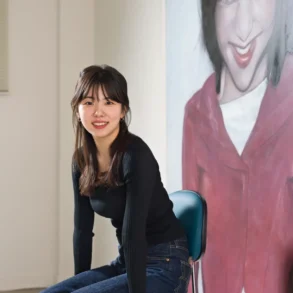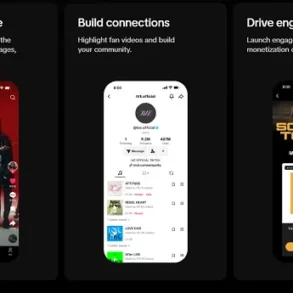
“I was about to go to bed and then realized we had this interview,” Jingna Zhang tells me. It’s 9 am in Seattle, where she’s currently living. The photographer and art director has been pulling all-nighters trying to keep up with demand for her social platform for artists, Cara, which recently exploded in popularity in response to widespread opposition to Meta’s policies around art and artificial intelligence. (Meta includes art from users in its training data.) More users has led to an onslaught of complications, including a hefty $96,000 bill from the social network’s cloud storage provider, as well as service outages. Cara began as a side project, but its newfound prominence means that Zhang is now an accidental startup founder, keeping the hours to match.
Zhang started Cara to give artists who oppose unethical use of AI a place to share images and network with like-minded peers. The platform takes an explicit stance against generative AI tools developed with training data acquired without permission from artists, and it currently filters out all AI images. It also offers beta integration with Glaze, a tool developed by University of Chicago researchers to give artists a way to stop generative AI companies from training on their work without consent. Launched in early 2023, Cara had just a few thousand users for the first year of its life; last week, it jumped from having around 40,000 accounts to 650,000, and is now closing in on a million users.
Although she’s never navigated a moment quite like this before, Zhang is a seasoned advocate for artist’s rights. In 2022, she filed a lawsuit against a painter who had won prize money submitting work that looked shockingly similar to a photograph she took in 2017 for Harper’s Bazaar. Although the suit was initially dismissed, Zhang won on appeal in March 2024. In December 2023, she joined an ongoing class action lawsuit against Stable Diffusion and other companies offering AI image generation tools, and in April 2024, she joined a similar lawsuit against Google as a lead plaintiff.
WIRED recently called Zhang to check in on how she’s handling the chaos of viral popularity, and how she thinks about the future of art in the age of AI.
Kate Knibbs: Walk me through the past few weeks of your life. What was it like when Cara started seeing this surge in users?
Jingna Zhang: For quite a while, I decided not to promote Cara too much, besides our launch announcement in January 2023, and then when we partnered with Glaze. We were still building out features. We were volunteers, doing it in our own time, not a startup trying to do hyper-growth. We had dealt with some security attacks when we partnered with Glaze, so we were like, is this an attack?
Was it?
It was genuine traffic. People were posting—regular people, artists, not spam. At first we thought it was a random spike, and then we realized it was because of the AI policy from Meta. At one point I woke up and we’d gained 20,000 more users in a day. Then the next day it was probably 50,000 more. Two days is usually how long the internet hype cycle lasts, and then people move on. But more people kept joining. Things started crashing, we were trying to fix them. We scaled up our database seven times. We’ve fixed our server issues. It’s stable, it’s online.
At the moment we’re having this conversation, how many people have Cara accounts?
Now we’re at nearly 900,000 users. But it’s been stressful. Yesterday or the day before—I’m losing track of time now—I saw a bill from a service provider and it was almost $100,000 for six days. So we’re trying to figure out our financial situation. It’s an ongoing process.
Are they working with you to reduce the bill?
I certainly hope so. We’ve had multiple calls and are working through things. There have been other service providers talking to us too, so we have options, but I’m hopeful that we can work it out with these guys and keep a longterm relationship.
This wasn’t meant to be your full-time gig. Is there a point where this gets too big and you have to look for partners? And are you considering a subscription model or outside investors?
Before this all happened, the next thing on our to-do list was to start a subscription service for our users, to see what the response would be and whether it would be self-sustaining. Now we don’t have time—we have to pay the bills now. So I’m looking at all options.
Do you worry about people from outside your circle getting involved and having a say?
The important thing is that I maintain control of how I’m building Cara. I love to be independent and want to do it on my own as long as possible, but in the worst-case scenario, we raise money. I did consider a friends and family [funding] round for later this year, with people I can absolutely trust.
Where would you like to see Cara in five years?
I want to see what the community needs and build according to that. I have some idea of how generative AI will impact jobs, and how it might reduce pay even for people who still have jobs, but who is to say what will be the most helpful in five years? I’m sorry if that sounds like a non-answer, but I just think you have to adapt as best you can and build what makes the most sense in the moment.
How many people are working on Cara right now?
Four or five of us for the last year or so. We temporarily have a bunch of help. I don’t know if they’ll stick around, but right now we have closer to 10 on the engineering team working with us through this crisis. Originally we had three staff helping me day-to-day, and right now we have 10 to 20 people trying to do things like manage our Discord, which last time I checked had between 8,000 and 10,000 people. They’re trying to manage content moderation. On Instagram we have tens of thousands of messages. Everyone just wants to help, and people are being really kind.
Backing up a bit, could you walk me through joining the class action lawsuits against generative AI companies?
I don’t really like to be involved in things, but if nobody has addressed something that I’d like to see, I’ll do it. It doesn’t matter if it makes me unpopular. It was a little difficult for me to watch when people were still in the denial stage about generative AI being usable for work. This will never replace artists, look how bad the hands are.
I will say that the hands are, indeed, bad.
My exposure to tech and art production is different since I work as a photographer and I’m in the pipeline of production. I’d have companies sending me demos talking about natural language processing being used to generate stuff five, six years ago. I stayed out of the AI discourse for a while because I was underway with my own copyright lawsuit at the time, and there was a lot of harassment.
What made you get involved?
Karla Ortiz, one of the lead plaintiffs of the lawsuit I joined—we’ve known each other online for a long time—we talked about all this copyright and AI stuff. I knew they wanted to have more lead plaintiffs to offer a broader representation. I thought that photographers’ voices were important to include too, so I became the only photographer on the lawsuit. Licensing is a huge part of our business. You are supposed to have licensed our work from us, to build a dataset, to use it for anything. So Karla and I got talking and eventually I felt that it was the right time to join.
What made it the right time?
The biggest reason I thought I’d be a good addition was because people keep saying that artists only care about copyright now because they see that image generators have taken their work. I wanted to show that it’s wrong—that we cared about this before generative AI.
Is there anything about generative AI art tools that you see as a positive?
If they were made with clean data, I might be able to think of ways to use tools to automate some of my own processes. But the problem is, I don’t think a little bit of convenience for me is worth the price of many people losing their jobs. Creative work—why is this the thing we have to focus on automating away? How about all the chores in daily life that are a pain?
What can regular people who want to support regular artists do at this moment?
Participate in the conversation, educate friends and family and even people online who may not understand copyright law or what people are fighting for. There have been some callous comments about how artists are just salty or bad at adapting—no, this is about copyright law. Participate in some kind of lobbying, some activism.
Automation, generative AI in the workplace, it’s coming for more than just designers and artists. It’s already being used in sales negotiations. If you look at the cycle of venture funding in the last couple years, a lot of startups focus on automating away receptionists, admins, salespeople. Lots of white-collar jobs will be automated away. This is not just about one group of people. It’s going to touch people all across our society.
This post was originally published on this site be sure to check out more of their content








